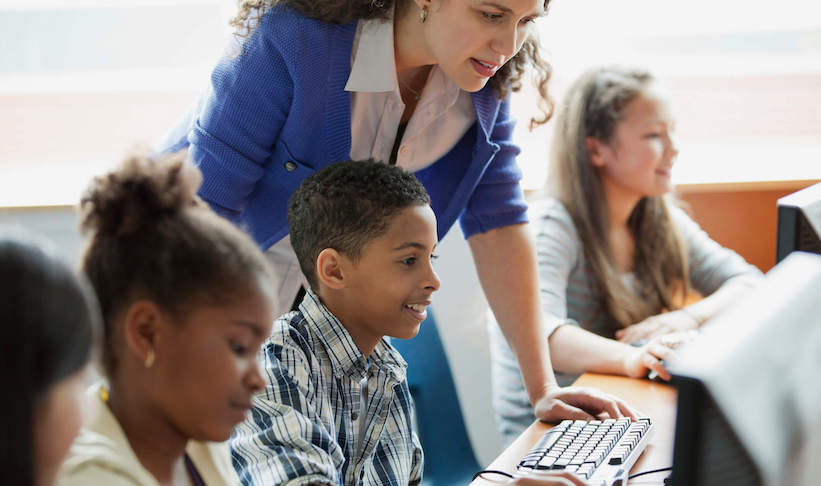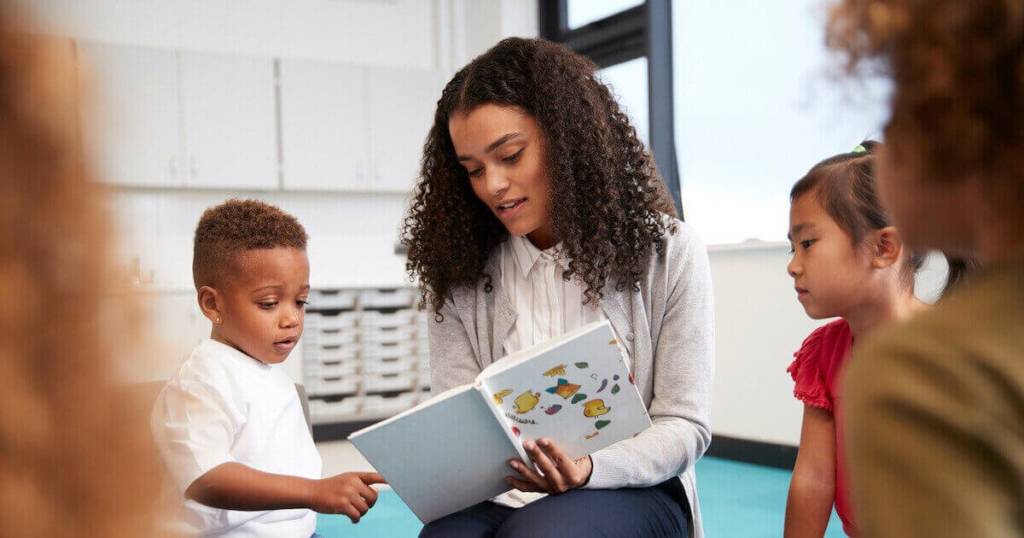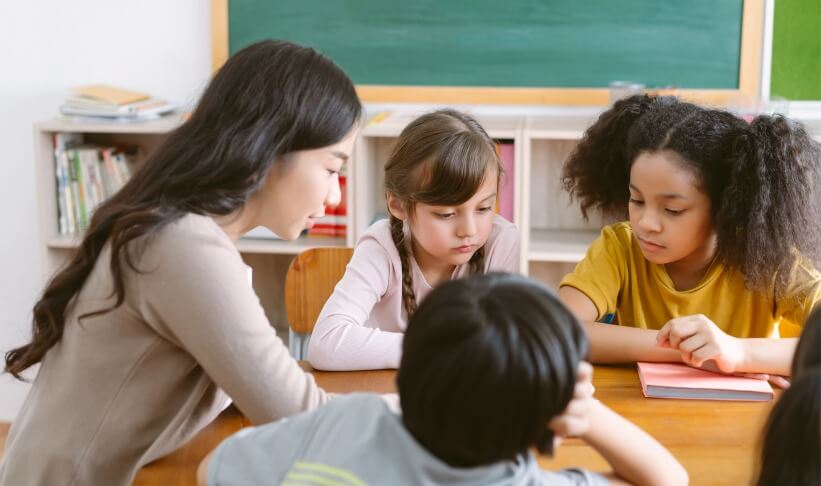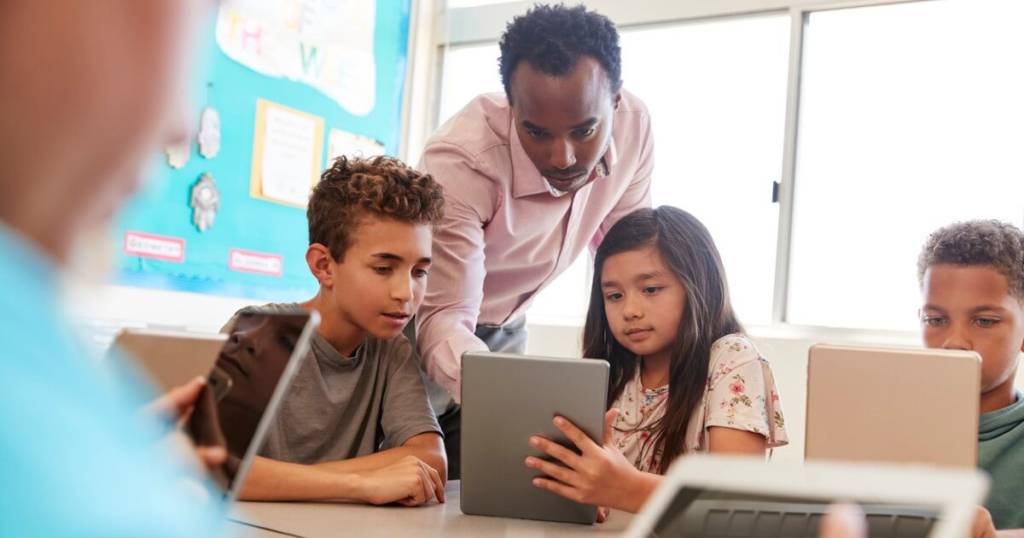There is no supercomputer more powerful than the human brain.
– Dr. Bobbi Hansen
To non-educators, the term “brain-based learning” may sound redundant. Doesn’t all learning involve our brains? Yes — but brain-based learning delves a little deeper into the science of how we learn in order to deliver more effective instruction.
This introduction to brain-based learning serves as an accompaniment to Dr. Bobbi Hansen’s presentation, “Teaching with Superpowers: Instructing Through Brain-Informed Practices,” delivered during a University of San Diego Master of Education town hall.
View the recorded presentation here. >>
Benefits of Brain-Based Learning
8 Brain-Based Teaching Strategies
How to Build a Brain-Based Curriculum: 7 Ideas
What Is Brain-Based Learning?
Brain-based learning involves teachers creating conditions that increase student motivation, engagement and long-term retention by tapping into the natural ways the brain receives, processes and stores information. This approach can be applied to classroom teaching methods, lesson planning, curriculum design and any other educational engagement. As long as the planning and delivery is rooted in the latest research on the science of learning, it’s considered brain-based instruction.
The research in question centers primarily around the brain’s ability to change and reorganize itself to receive and retain new information in a process called neuroplasticity. New information and experiences can physically reshape the brain’s neural pathways; the more we practice new skills or review new information, the stronger those pathways become and the better we retain the information or ability.
Our brain’s neuroplasticity is influenced, both positively and negatively, by motivation, stress and challenge, as well as our emotional state as we’re learning. Understanding how neuroplasticity works (especially in young, developing brains) can help curriculum designers and educators build lessons that are more likely to “stick.” When students master new concepts or gain new skills in the classroom, teachers see this neuroplasticity in action. Perhaps Dr. David Sousa, an educational neuroscience consultant, puts it best: “Successful teachers are brain-changers!”
History
The theory of the left and right brain has been synonymous with learning styles since it was introduced in the 1960s. Neuropsychologist Roger W. Sperry posited that all humans are either right-brain or left-brain dominant, depending on how they think and receive information. More informed neurological research, however, has since disproven this theory; we now know that humans use each hemisphere of their brain for different tasks, and that neither is dominant over the other.
As neurological research and discovery gained traction in the 1990s, some researchers began to apply their findings to the classroom. In “Understanding a Brain-Based Approach to Learning and Teaching,” Geoffrey Caine and Renate Nummela Caine proposed that educators leverage neuroscience to improve students’ knowledge retention and performance. The Caines found that students had better comprehension and retention in a collaborative, hands-on, brain-based learning environment than those in a traditional lecture-based classroom. Scientifically speaking, active learning leads to the growth of dendrites — nerve cell extensions in the brain that influence how neurons collect and process information. This is good news for knowledge retention.
Brain-based learning has since gained significant traction in schools. As evidenced by texts like Neuroteach: Brain Science and the Future of Education (Rowman & Littlefield, 2016), there remains a continued insistence that all educators have a working knowledge of how the brain receives and retains information in order to be better teachers.
Key Principles of Brain-Based Learning
The overall goal of brain-based learning is not complicated, nor is it unattainable:
To create a learning environment and classroom strategy where all students can thrive.
To achieve this goal, educators need to break down their instruction (and their students’ learning) into smaller components. In her town hall presentation to USD MEd students, Dr. Bobbi Hansen identifies four key principles of brain-based learning:
- Experience: New experiences only reshape the brain when we are actively participating in those experiences.
- Flow: Stress affects memory, so instructors need to facilitate a “flow state” in which students are comfortable, safe and focused.
- “Sticky” learning: Utilize teaching methods that result in higher knowledge retention, such as learning by doing or student-led instruction.
- Brain-informed teaching practices: Identify and implement the teaching strategies that will best support the current group of students.
The following are some specific classroom examples that incorporate these four key principles:
Health and wellness
Physical activity isn’t only for the gym. When students are able to take stretch breaks, go for short walks or otherwise move their bodies during lessons, the more engaged they will be when they come back. Movement-based learning is more common in younger grades, but teachers should not count older students out — bringing some light physical engagement to classroom lessons can:
- Energize and revitalize students (and teachers)
- Improve students’ attention spans
- Help students receive and retain more information
Positivity
When students are in a positive emotional state, they are more willing to engage in lessons and classroom activities. Social validation from their peers and affirmations from their teacher can contribute to students’ feelings of belonging.
Group work
When learning new material, it can be highly valuable to hear other students’ reactions or experience how they take in new information. Group activities help students learn from one another and may even help them understand information better than they would have from their teachers’ presentations.
Peer teaching
Educators may occasionally feel unprepared to teach certain course material but find that their comprehension grows as they begin to deliver their lessons. Teaching others is the most effective way to learn, and this applies to students as well. If a handful of students grasp a concept right away, they can then turn around and teach their peers, thereby strengthening their own understanding and delivering this new information in a way that resonates with their classmates.
Practice
Repetition, experimentation and productive failure are all more effective than simple memorization of facts or vocabulary. Students should have an opportunity to practice new skills and retrieve new knowledge before any major assessment.
Limiting lectures
Traditional lecture-based teaching has been proven not as effective as active learning. Making lessons more active rather than passive promotes students’ knowledge retention.
Meaningful information
Academic concepts can often feel disconnected from students’ actual lives. How many teachers have fielded the question, “But when am I ever going to need this?” Finding ways to connect course materials to the real world boosts student engagement and gives relevant meaning to abstract concepts.
Written and verbal information
Lessons and assignments that incorporate varied modes of delivery give students a better chance of logging information in their long term memory. This involves the instructor delivering both spoken and written lessons, and the students demonstrating their understanding through both written and verbal assignments.
Stimulation
Not all students learn the same way, but there are ways to capture their attention that generally garner a positive reaction. Incorporating movement, humor, games or current events that are of interest to their age group can increase students’ participation, processing abilities and the likelihood that they will remember the course content.
Stress mitigation
In general, stress negatively impacts our brains’ neuroplasticity, preventing us from retaining information. By and large, students learn and perform better in a classroom environment that is calm, safe, supportive and positive (and with a teacher who exhibits the same qualities).
Benefits of Brain-Based Learning
When information is presented in a way that accounts for the brain’s ability to process it, it can vastly improve the learning experience. Brain-based learning supports:
- Skills retention
- Higher academic performance
- Academic progression
- Resiliency
- Long-term memory
- Brain health and function
- Mood
- Classroom cooperation
- Motivation
- A positive attitude
8 Brain-Based Teaching Strategies
As long as a lesson is built around the way students receive and retain information, brain-based learning can look like almost anything. Educators can utilize multiple instructional methods while following the principles of experience, flow, “sticky” learning and brain-based teaching strategies. These principles remain the same no matter the age of the student; it is up to the teacher and their creativity to build age-appropriate lessons rooted in a brain-based foundation.
Here are some high-level strategies teachers can use when building their brain-based lesson plans:
- Combine written and verbal information to boost learning retention
- Prioritize engagements that are hands-on, creative, useful and have an emotional impact
- Favor lessons and activities that help students develop critical thinking skills over simple memorization
- Model lessons and assignments on real-world challenges that students can relate to
- Create lessons that teach students social and team-building skills in addition to course content
- Build opportunities to practice course content into every lesson, or before moving on to the next unit
- Incorporate movement or brain breaks into lessons, regardless of grade level
- Ensure that neither lessons nor the classroom environment contribute to unnecessary stress or anxiety
How to Build a Brain-Based Curriculum: 7 Ideas
As mentioned above, a brain-based curriculum can look like anything, so long as lessons are built to encourage students’ neuroplasticity and optimal knowledge retention. It’s important to note that not all strategies work for all students, so rely on trial and error to see what works and what doesn’t for your classroom.
- Break learning into chunks.
This may seem obvious to many educators, but it bears repeating. Students learn best when they can digest new concepts bit by bit; break lessons down into bite-sized pieces that fall into introductory, practice and review segments before moving on to a new concept or topic.
- Include “turn and talk” time in your lessons.
Take breaks during each lesson or unit for students to talk amongst themselves and solidify their understanding of the topic. This can fall into the “review” stage mentioned above. You can also task students with explaining a new concept to a parent or someone unfamiliar with it. After all, teaching is the best way to grasp a new skill or subject.
- Move!
Not all “chunks” need to involve learning! Leave space in each lesson for movement or stretch breaks. You can even create lessons that get students moving while they learn — e.g. role playing a historical event or reading out loud “popcorn”-style with a tossed ball.
- Include multisensory elements in each lesson.
For some topics, using visual elements may be a no-brainer; but challenge yourself to activate other senses during your lessons. Can you help students “physicalize” parts of speech? How can you bring a history lesson to life through sound?
- Practice retrieval.
Encourage students to try to remember what they’ve learned from a lesson, even if the topic is fairly new to them. The process of remembering strengthens memory and identifies gaps that call for a refresher. For example, rather than providing a study guide with bullet points covering key points of a lesson, build your study guides around questions that students will need to answer, thereby creating their own study guide through retrieval.
- Use concept mapping.
Concept mapping is the act of connecting separate elements of a topic or unit into a web of comprehension. For example, in a unit on cell structure, students can list out what they’ve learned about each component of a cell, then visually connect the components to each other by explaining their relationships.
- Make it real.
Whenever possible, get your students out of the classroom to apply their learning in the real world. Field trips are a classic example of experiential learning, but even taking your students for a walk around campus to talk about the weather or photosynthesis can help make abstract concepts easier to understand.
This is just a sampling of the ways in which creative educators can leverage neuroscience to help their students succeed in the classroom.
The best teachers never stop pursuing new ways to make learning accessible for all students. The specializations offered by USD’s Master of Education program enable educators to drill down into specific areas of interest that not only improve their own teaching practice, but can also lead to higher student achievement and a love of learning. Explore all the ways in which you can strengthen your teaching skill set and boost your earning potential with an advanced degree.




